Results
-
 £89.99
£89.99The Machine Awakes (for Band Plus Electronics) - Steven Bryant
The Machine Awakes is the sound of something not human (but of humans hands) - something not entirely organic, but most definitely alive - waking up for the first time. From the opening swirling textures, we sense the firsthesitant sparks of thought, attempting to find form and coherence. This new machine comes fully awake, possessed of emphatic self-determination and purpose. The Machine Awakesgives ensembles with a wide range of technical abilitythe opportunity to experience the meshed sound world of electronic sounds and acoustic instruments. The set comes with optional parts for more advanced players. Dur: 5:00
Estimated dispatch 7-14 working days
-
 £129.99
£129.99Aquarium - Johan de Meij
The Suite 'Aquarium' is Johan de Meij's third composition for symphonic band and features six tropical fishes, each of them represented by a motif, and surfacing as such in several guises. The composition consists of three movements of which the second and third merge uninterruptedly into each other. I) Allegretto grazioso (Neon Tetra, Electric Eel and Angelfish) II) Andante / Adagio (Sea Horse and Zebrafish) III) Finale: Allegro giocoso (Guppy & Co.) The Neon Tetra motif functions as a kind of 'Leitmotiv' and descibes the beautifully coloured, frisky fish: A number of variants have been derived from this theme and will also appear in the other movements.The Electric Eel in fact is not represented by a motif, but by a rhythm based on the restless electric pulses made audible in some aquaria. The Angel fish is represented by elegant cluster chords. In the second movement the Sea Horse emerges out of the water vegetation and starts a dialogue with the Zebrafish, which is represented by one melodic phrase in unison, getting more and more threatening by added parallel fifths and octaves. Simultaneously with the Sea Horse motif the Neon Tetra theme emerges, this time in 3/4 time and in Eb minor. The third movement starts with only two instruments (trumpet and xylophone), but as it is often the case with Guppies their number rapidly increases. Piccolo and Alto Saxophone introduce the Guppy Theme followed by several instrumental combinations. Every theme from the first movement 'swims by' once more, after which the principal motif leads us to a brilliant ending.
Estimated dispatch 7-14 working days
-
 £57.50
£57.50Carrying You from "Laputa: Castle in the Sky" - Joe Hisaishi
New Sounds in Concert Band Series(NSB) for small band with 2-part choir Duration: approx.4'10" Arranged by Eiji Suzuki"Carrying You" was composed as a theme song to Castle in the Sky, an animated film produced by Studio Ghibli and directed by Hayao Miyazaki, released in 1986. The composer for Castle in the Sky was originally not Joe Hisaishi, but the director Miyazaki strongly requested him. The director told Hisaishi his vision for the film, and based on the world he imagined, Hisaishi made a collection of music called the Image Album. The melody that later becomes the basis for "Carrying You" was born from this album. However, the director Miyazaki was not planning on including a theme song in this film. Isao Takahata, the producer, proposed including a song, for the audience to think over the film at the end. He wanted the audience to think, "While the protagonists sought for the treasure, they didn't obtain any treasure. What did they obtain instead?" They thought, if they are going to create a theme song, it should be something organically connected with the entire film. Takahata requested the director Miyazaki to write the lyrics for the theme song. And to Hisaishi, he gave instructions to create a melody for the theme song using an instrumental piece called "Pazu and Sheeta" from the image album mentioned above. Director Miyazaki handed a piece of memo with lyrics to Takahata. "Carrying You" we hear now is this lyrics with some changes, set to Hisaishi's music. The melody is used at the opening of the film as well as the scene where Laputa is destroyed, and the song is used for the ending. Performance Advice from Arranger Suzuki: This is an extremely simple arrangement that can be performed by lower grade bands and singers. Of course, it can be played without singers and chorus, but the contents of the lyrics are very tasty so if possible, we recommend that you perform using the voices. Depending on your resources, the voice parts can be done as all solo, all female chorus, and so on.
Estimated dispatch 7-14 working days
-
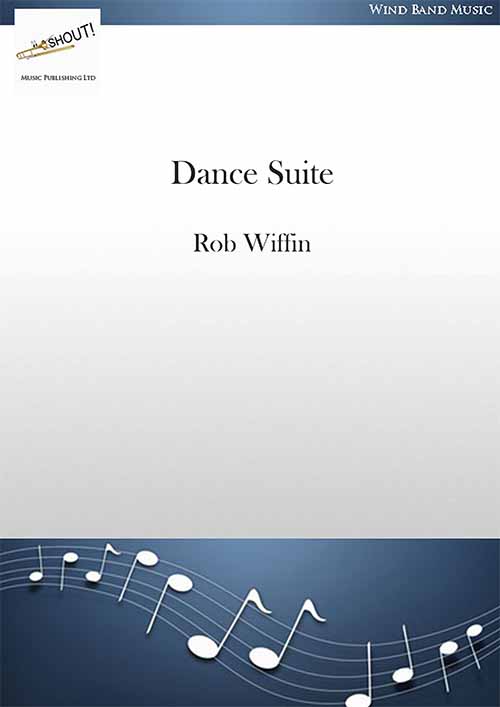 £89.95
£89.95Dance Suite (Concert Band - Score and Parts) - Wiffin, Rob
Dance Suite comprises three dances - Femme Fatale (a tango), Midnight Wish (a rumba) and Wherever I look (a Mambo). The first two movements are fairly straightforward but the mambo is a little more difficult and also requires 4 rather than three trumpets - the fourth part being included in the first trumpet part in the complete suite. The music works best with a string bass or a bass guitar but the bass line is fully cued in the tuba part. Each of the movements is also available separately.Duration: 11.00
Estimated dispatch 7-14 working days
-
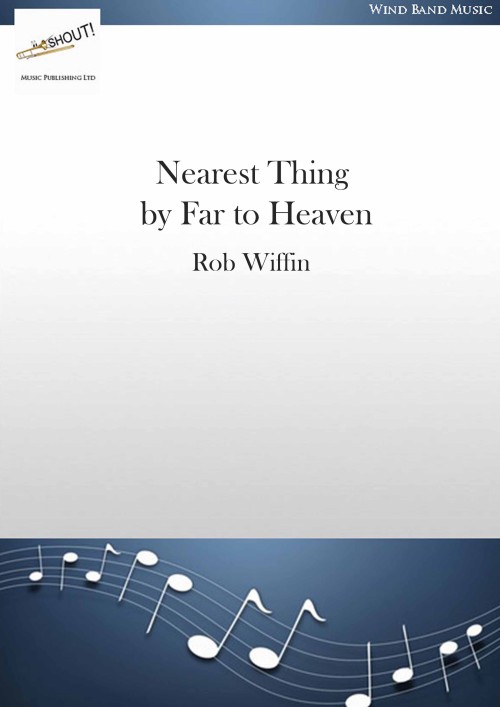 £39.95
£39.95Nearest Thing by Far to Heaven (Flute Solo with Concert Band - Score and Parts) - Wiffin, Rob
An expressive solo for flute and band, this slow, blue-tinged piece is the result of the opportunity given by the Covid lockdown of 2020 to look anew at some old songs. In this one, a fairly straightforward but expressive melodic line is stated in its original form then repeated in a much expanded and occasionally florid setting, allowing the soloist to cover a range from low C up to top A. Eventually the music returns to the tranquillity of the opening.The band accompaniment was written in 2024 and is kept light but colourful allowing the soloist to be expressive without fighting to project through the texture.Duration: 3.45
Estimated dispatch 7-14 working days
-
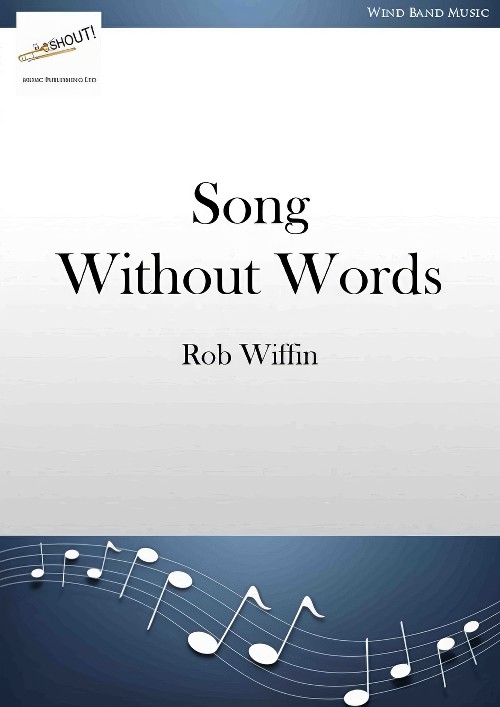 £33.95
£33.95Song Without Words (Cornet, Oboe or Violin Solo with Concert Band - Score and Parts) - Wiffin, Rob
This simple but poignant little piece presents no technical challenges but needs expression and good control.Duration: 3.15
Estimated dispatch 7-14 working days
-
 £144.99
£144.99Serenata (Euphonium Solo with Concert Band - Score and Parts) - Van der Roost, Jan
While composing Serenata, Jan Van der Roost didn't focus too much on virtuosity, acrobatics or spectacle. Instead, he wanted to let the solo instrument shine as a melodic and expressive voice. And indeed: the warm sound of the euphonium touches the heart of the audience straight away in the first section with a melodious theme. Then follows a rigaudon, a noble and elegant dance from the Renaissance era. Despite the fact that some of the variations on the main theme require some technique and agility, the overall character mostly remains songful. The composition as a whole builds further on these two musical ingredients, but thanks to a clever alternation of melodic and technical passages, it offers a nice stylistic diversity to the listeners. The band is definitely not 'just accompanying' but fully participates and begins a dialogue with the soloist: both musical partners have their say. The end is more spectacular and sonorous, giving an extra boost of energy to the soloist as well as the band in a grand finale!Duration: 12.00
Estimated dispatch 7-14 working days
-
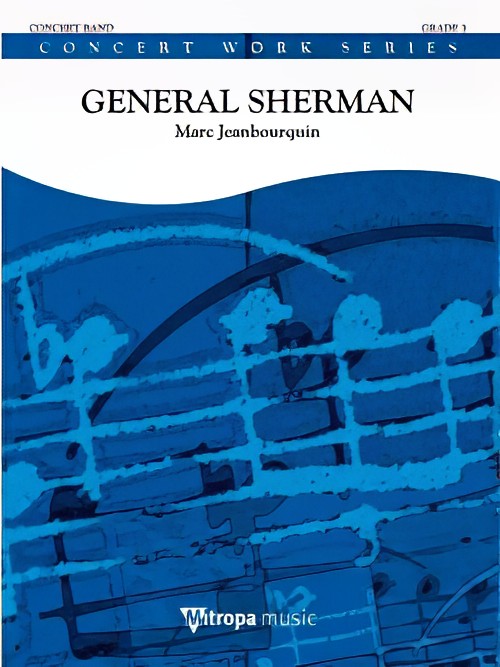 £87.99
£87.99General Sherman (Concert Band - Score and Parts) - Jeanbourquin, Marc
General Sherman is a giant sequoia situated in the Sequoia National Park, in California. The naturalist James Wolverton named it in homage to the famous American general William Tecumseh Sherman. The impressive character of this sequoia inspired the composer, but the introduction could also evoke General Sherman arriving in the distance. Marc Jeanbourquin imagined how this giant could be in all its grandeur, attempting to climb into the foliage to find the light that filters from the top. But energetic passages indicate that the presence of the general is never far. The work concludes with a reminiscence of the initial theme, full of mystery.Duration: 5.15
Estimated dispatch 7-14 working days
-
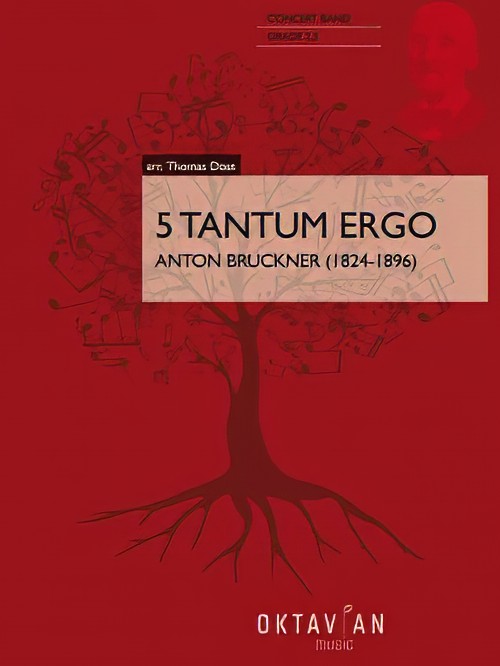 £95.99
£95.995 Tantum Ergo (Concert Band - Score and Parts) - Bruckner, Anton - Doss, Thomas
Anton Bruckner (b. 4.9.1824, Ansfelden, d. 11.10.1896, Vienna) didn't have it easy. Throughout his life, the Austrian composer was plagued by self-doubt. Anton Bruckner came from a simple, rural background. After the death of his father, he was accepted as a choirboy at the monastery of Sankt Florian in 1837. After several years as a school assistant and his own organ and piano studies, he first worked as organist in St. Florian, then from 1855 as cathedral organist in Linz. Introduced to music theory and instrumentation by Simon Sechter and Otto Kitzler, he discovered Richard Wagner as an artistic role model, whom he admired throughout his life and also visited several times in Bayreuth. In 1868 Anton Bruckner became professor of basso continuo, counterpoint and organ at the Vienna Conservatory; ten years later court organist; and in 1891 finally honorary doctor of the University of Vienna. He was considered an important organ virtuoso of his era, but had to wait a long time for recognition as a composer. It was not until Symphony No.7 in E major, composed between 1881 and 1883, with the famous Adagio written under the effects of Wagner's death, that he achieved the recognition he had hoped for, even if he was reluctant to accept it given his inclination towards scepticism and self-criticism. Anton Bruckner was a loner who did not want to follow a particular school or doctrine. He composed numerous sacred vocal works, such as his three masses, the Missa Solemnis in B flat minor (1854), the Te Deum (1881-84) and numerous motets. As a symphonic composer, he wrote a total of nine symphonies and many symphonic studies from 1863 onwards, tending to revise completed versions several times over. Bruckner's orchestral works were long considered unplayable, but in fact were merely exceptionally bold for the tonal language of their time, uniting traditions from Beethoven through Wagner to folk music, on the threshold between late Romanticism and Modernism. Hymns for four-part mixed choir a cappella (1846, St. Florian) No. 1 in E flat major (WAB 41/3): Quite Slow No. 2 in C major (WAB 41/4): Andante No. 3 in B flat major (WAB 41/1): Slow No. 4 in A flat major (WAB 41/2): Slow Hymn for five-part (SSATB) mixed choir and organ No. 5 in D major: Solemnly They are simple works, completely subordinate to their liturgical use, which nevertheless already show numerous characteristics of personal expression. These small pieces were able to stand up to the harsh scrutiny of the mature master: in 1888, Bruckner subjected them to a revision in which he made only minor corrections.Duration: 11.00
Estimated dispatch 7-14 working days
-
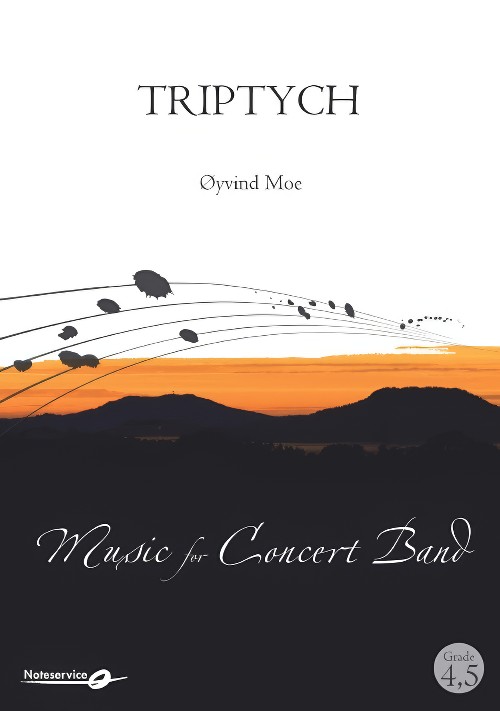 £116.00
£116.00Triptych (Concert Band - Score and Parts) - Moe, Oyvind
Triptych was commissioned by Midtun Skoles Musikkorps for their 60th anniversary in 2018.The term triptych originally meant a three-part altarpiece but is used today to denote any piece of art in three parts. This piece has no direct link to the visual arts, religious or not, but retains the original format of a central section with two wings. The main theme of the piece is presented in the slow middle movement, while the outer movements, a rhythmic and energetic opening and a dramatic and eventually triumphant finale, are built around variations of this theme. The intention has been to create a total expression that maintains the connectedness and sense of whole implied by the title, rather than simply being a work in three parts.Duration: 14.30
Estimated dispatch 7-14 working days
